Even those far from the art world know the name Andy Warhol. His famous portraits of Marilyn Monroe, Campbell’s soup cans, and the pop art manifesto became symbols of an entire era. He was not just an artist — he was a medium who reflected the 20th century through the lens of gloss, mass culture, and irony. His work is a mirror of society, where an ordinary soup can could suddenly become a piece of art, and a movie star’s smile — an icon repeated hundreds of times.
We live in an era he predicted: the age of Instagram, the cult of celebrity, and total visual saturation. Why was pop art born precisely then, and why did Warhol become its messiah?
This text is not just a biography. It’s an immersion into the era, style, philosophy of life, and creativity of Warhol. We will trace his journey from a sickly boy in Pittsburgh to an artist who sold portraits like cans on a supermarket shelf. And perhaps we will understand why he still lives on in our culture — even decades after his death.
"In the future, everyone will be famous for 15 minutes." — Andy Warhol
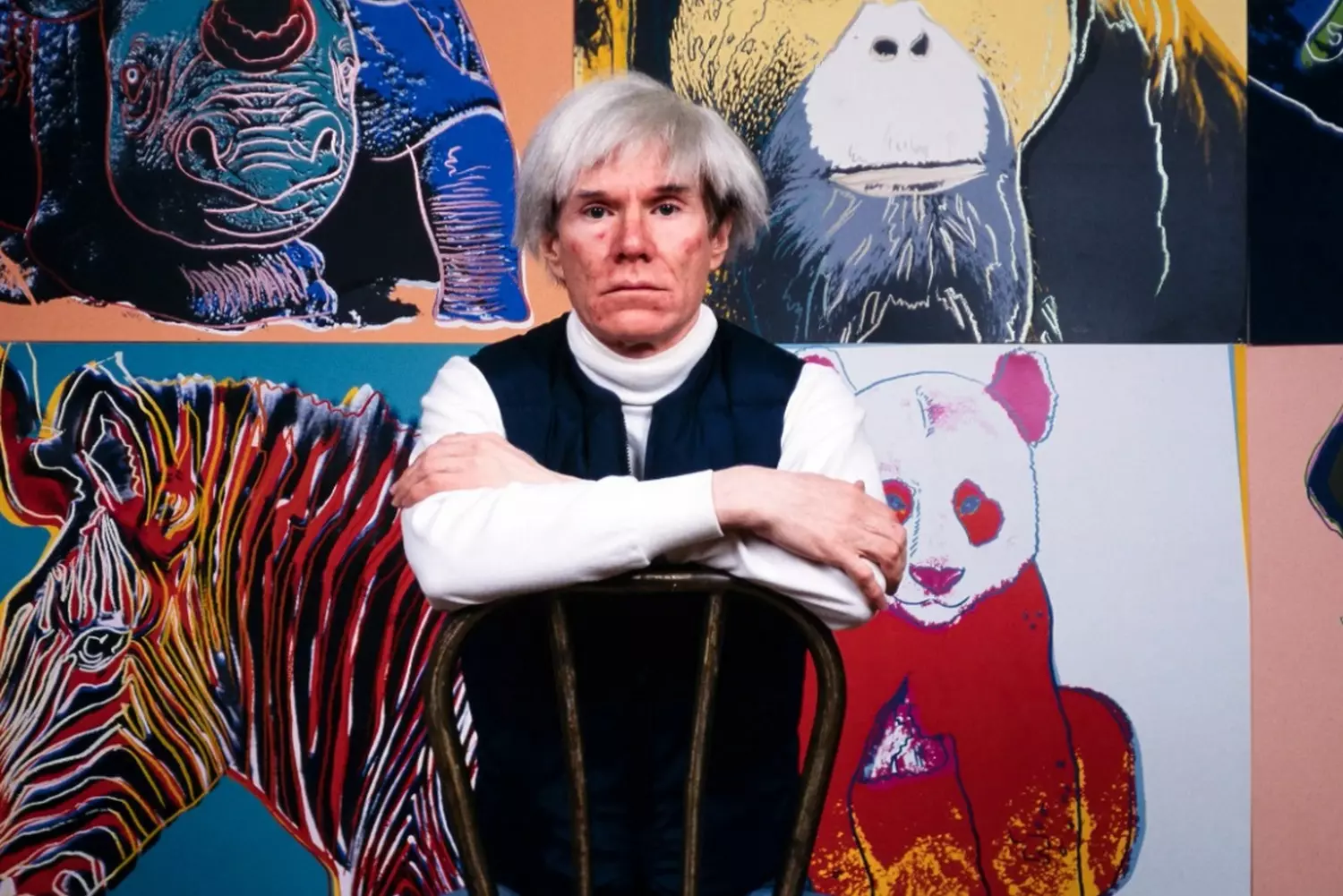
"Warhol is the only genius who managed to turn a soup can into the Bible of the 20th century." — Salvador Dalí
Childhood and Origins: The Pittsburgh Roots
Andy was born on August 6, 1928, in Pittsburgh, Pennsylvania, to a family of immigrants from Slovakia. His original last name was Warhola, and only later, in New York, did he drop the final letter, becoming Warhol. His father worked as a construction laborer and often traveled for work, while his mother, a devout woman with artistic inclinations, raised the children and instilled in them the Catholic faith. The family lived modestly, but stayed closely knit.
As a child, Andy was often ill: at the age of eight, he suffered a severe case of chorea, a condition brought on by complications from scarlet fever. He spent long periods bedridden, unable to attend school, and found solace in radio shows, magazines, and drawing. He began sketching by copying comic strips, photos of actors, and newspaper images. It was during these confined years in a poor apartment that he learned to observe and appreciate the visual codes of mass culture. These early experiences shaped his taste and, in many ways, saved him. Illness turned him into an artist, and solitude made him a chronicler of a world filled with images and symbols — which he would later learn to replicate with surgical precision.
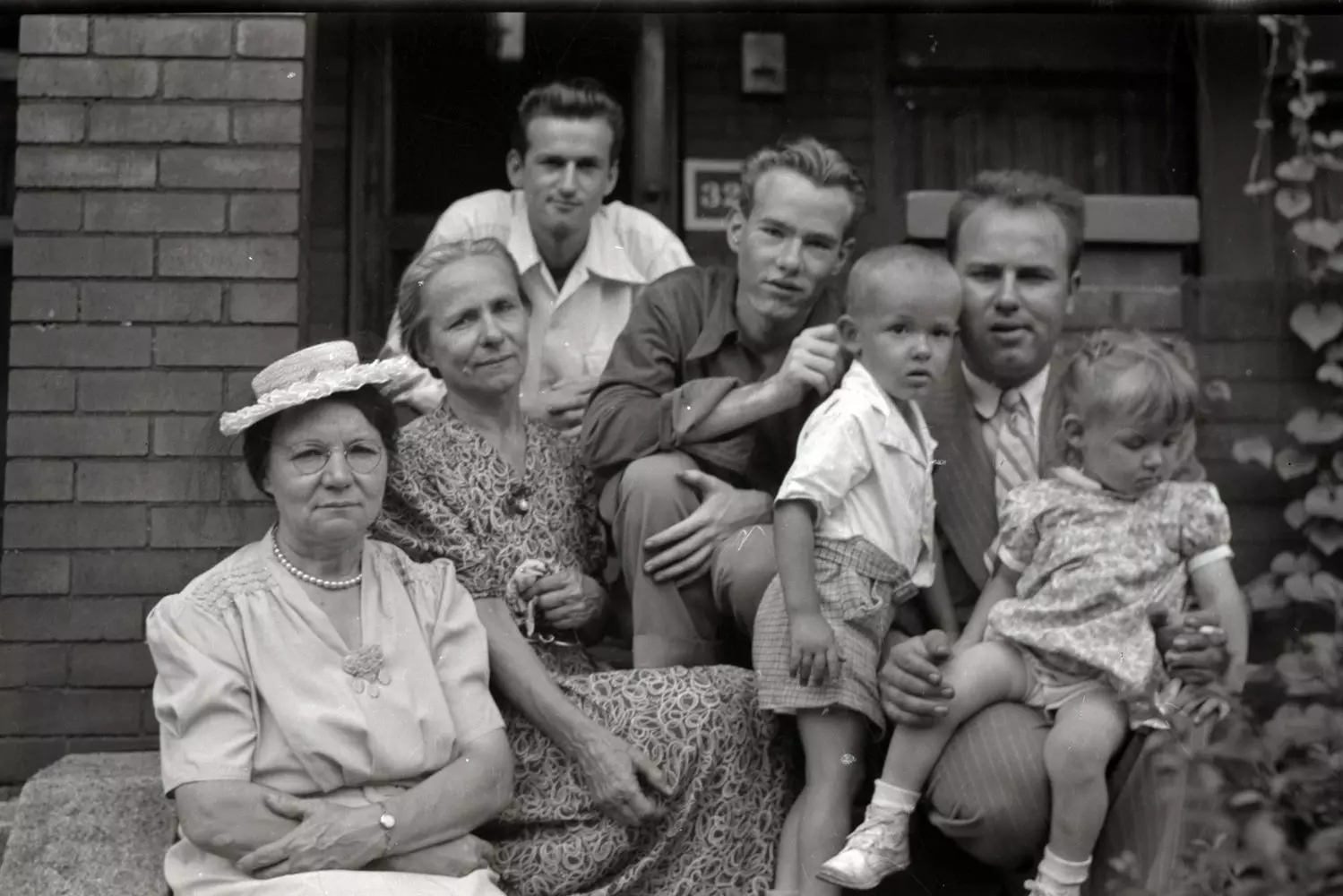
Youth and Artistic Formation: The Journey from Pittsburgh to New York
After graduating from high school, Warhol enrolled at the Carnegie Institute of Technology (now Carnegie Mellon University), where he studied commercial art. Even then, he began experimenting with illustrations and design, dreaming of one day leaving Pittsburgh and heading to New York — the capital of fashion, advertising, and art.
At the university, he received a strong academic foundation, but more importantly, he learned to use art as a tool for communication. He increasingly turned to mass imagery, emphasizing the importance of stylization and visual code.
In 1949, after graduating, Warhol finally moved to New York. He had no connections, no money — only a portfolio full of unconventional ideas. He managed to land work as an illustrator for advertising agencies and magazines. Even then, he employed a distinctive style: messy lines, handwritten lettering, collage elements. It was bold, fresh, and defied the norms of glossy design.
- 01. His first major breakthrough came with a collaboration with Glamour magazine. His work began to get noticed, leading to commissions from major clients like Tiffany & Co., Columbia Records, and Vogue. But commercial art was just a training ground. All this time, he was exploring how to merge advertising with fine art — how to erase the boundary between them.
- 02. In the early 1950s, he started participating in exhibitions, creating series of drawings inspired by gay culture, Broadway performers, and the male form. These works were too daring for the era and remained largely under the radar, but they marked his first steps toward what would become pop art.
Fun Fact: Warhol often drew by hand using a technique called blotting — transferring an image from one sheet to another to create unique, slightly smudged forms. This method would become a key element of his recognizable visual language.
By the mid-1950s, he was exhibiting more frequently, his name began to circulate in bohemian circles, and he gained his first admirers. However, true fame would only arrive in 1962, when he unveiled the Campbell’s soup cans — a turning point that would make him a star.
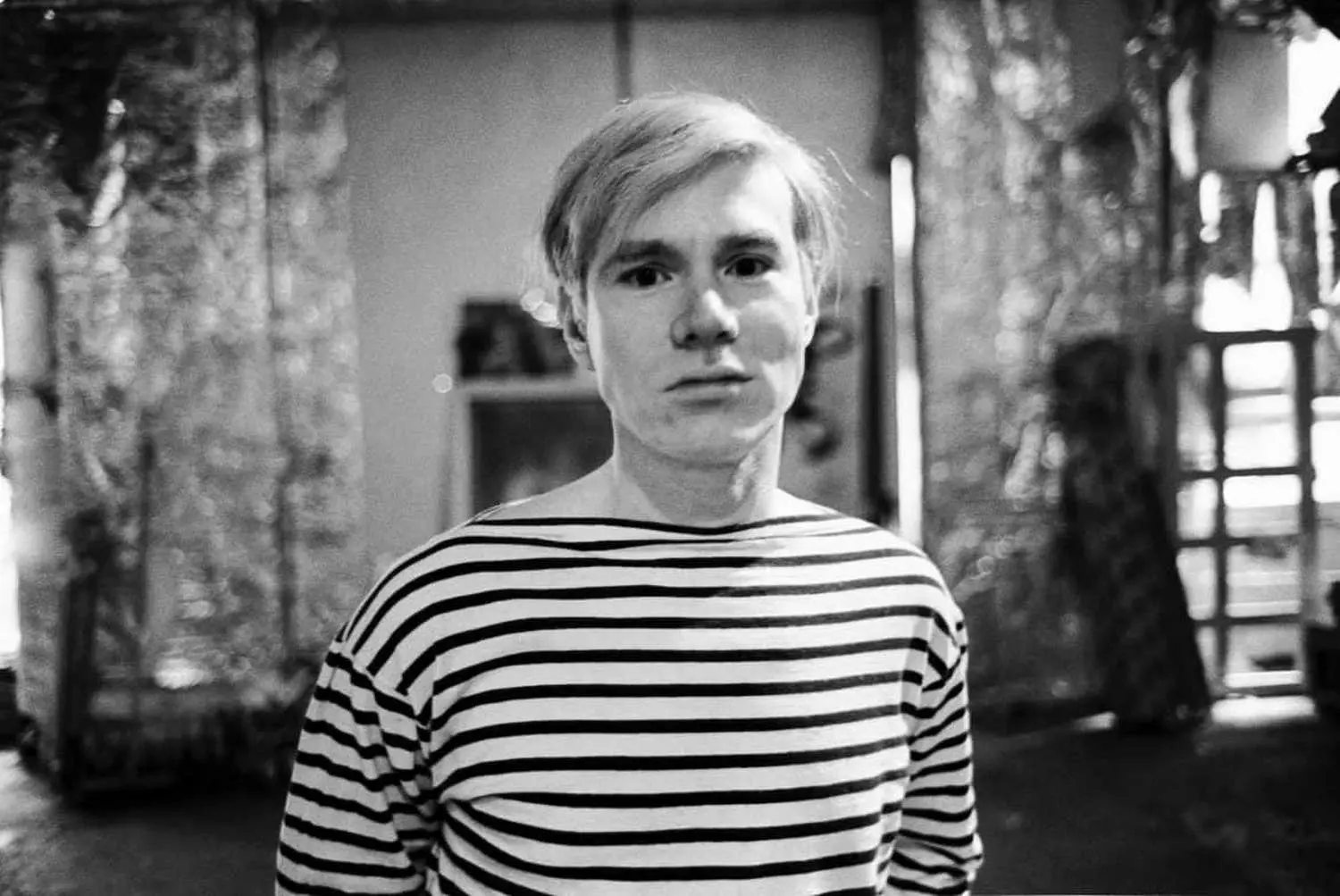
Pop Art as Philosophy and a Challenge to the Elite
Pop art emerged as a challenge to the rigid confines of mid-20th century art. It became a form of visual rebellion against modernist elitism and the insularity of galleries. Warhol, more than anyone, sensed the spirit of the age — an era of consumption, advertising, and television glow. He saw beauty in the mundane: a can of soup, a bottle of Coca-Cola, a celebrity photo. He didn’t paint — he reproduced, like a machine — and in doing so, dismantled old artistic norms.
The Campbell’s soup cans, the Coke bottles, the portraits of Marilyn and Elizabeth Taylor — these weren’t just art pieces, they were provocations. Warhol claimed that art should be understandable, accessible, and endlessly reproducible. He spoke in the language of advertising, repetition, and gloss, because that was the language understood by the people of the ’60s.
- Art doesn’t need to be elitist to be meaningful
- Repetition gives an image power and universality
- Commerce isn’t the enemy — it’s part of the aesthetic and the message
"I like mass production. I want to be a machine."
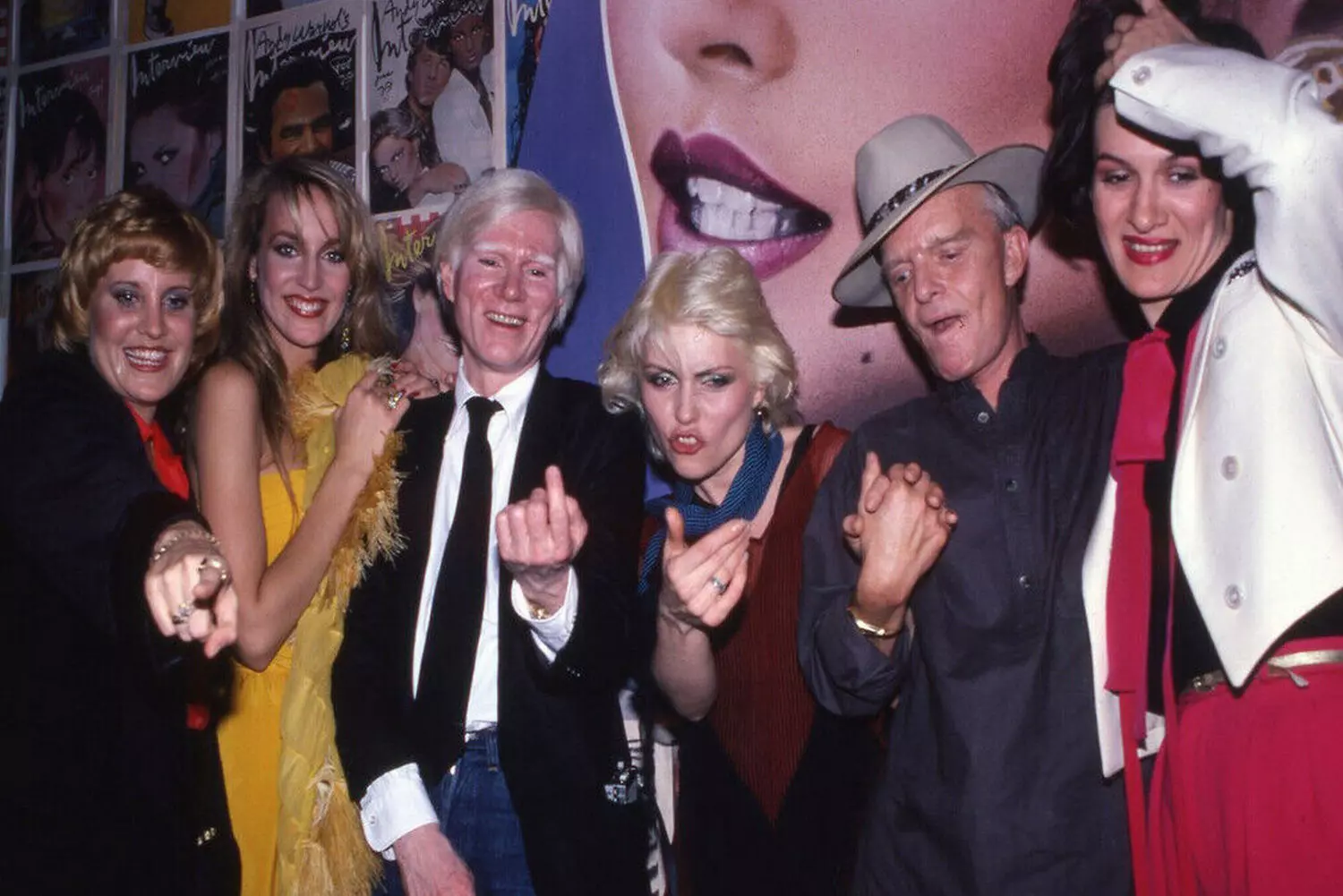
The Factory: Art Machine and Creative Mecca
In 1962, Warhol opened his studio The Factory in New York — a cult space that became the epicenter of a creative revolution. It wasn’t just a place where paintings were made: The Factory turned into a sanctuary of both the underground and the mainstream, a fusion of bohemian lifestyle and industrial process. Artists, musicians, models, addicts, aristocrats, and vagabonds all came together here — from Mick Jagger and Lou Reed to Truman Capote and Nico.
This is where the idea of “art as production” was born — through stencils, silkscreening, and mechanical reproduction. Warhol pushed seriality to the extreme, turning each portrait into a unique mass-produced print. His studio functioned like a conveyor belt: art became a process, and the artist — a brand.
Party Life: Studio 54, Social Chronicles, and the Cult of Presence
If The Factory was a daytime temple of art, at night Andy transformed into a chronicler and star of New York’s wildest nightclub — the legendary Studio 54, a symbol of the era’s luxury, decadence, sexual revolution, and cocaine-fueled freedom. Warhol was a regular, an integral part of the club, sitting in the VIP section, observing the scene with cold curiosity and his indispensable camera in hand.
- 01. His circle included the loudest names of the time: from Bianca Jagger and Liza Minnelli to Truman Capote and Grace Jones. He was friends with John Lennon, Mick Jagger, Calvin Klein, and was constantly surrounded by models, transvestites, artists, and random eccentrics. He was drawn to provocation, to the edge where show becomes life.
- 02. For Andy, parties weren’t just entertainment — they were performance art, a continuation of his work. He filmed, recorded, collected faces, images, and lines. He didn’t drink, barely used drugs, but was always present where the action was. His presence gave a party status — if Warhol was there, it meant something was happening.
Studio 54 became a part of his myth. It was there that a new level of celebrity culture was born — where the artist and the star became one and the same. Andy seemed to erase the boundaries between art, partying, and life itself.
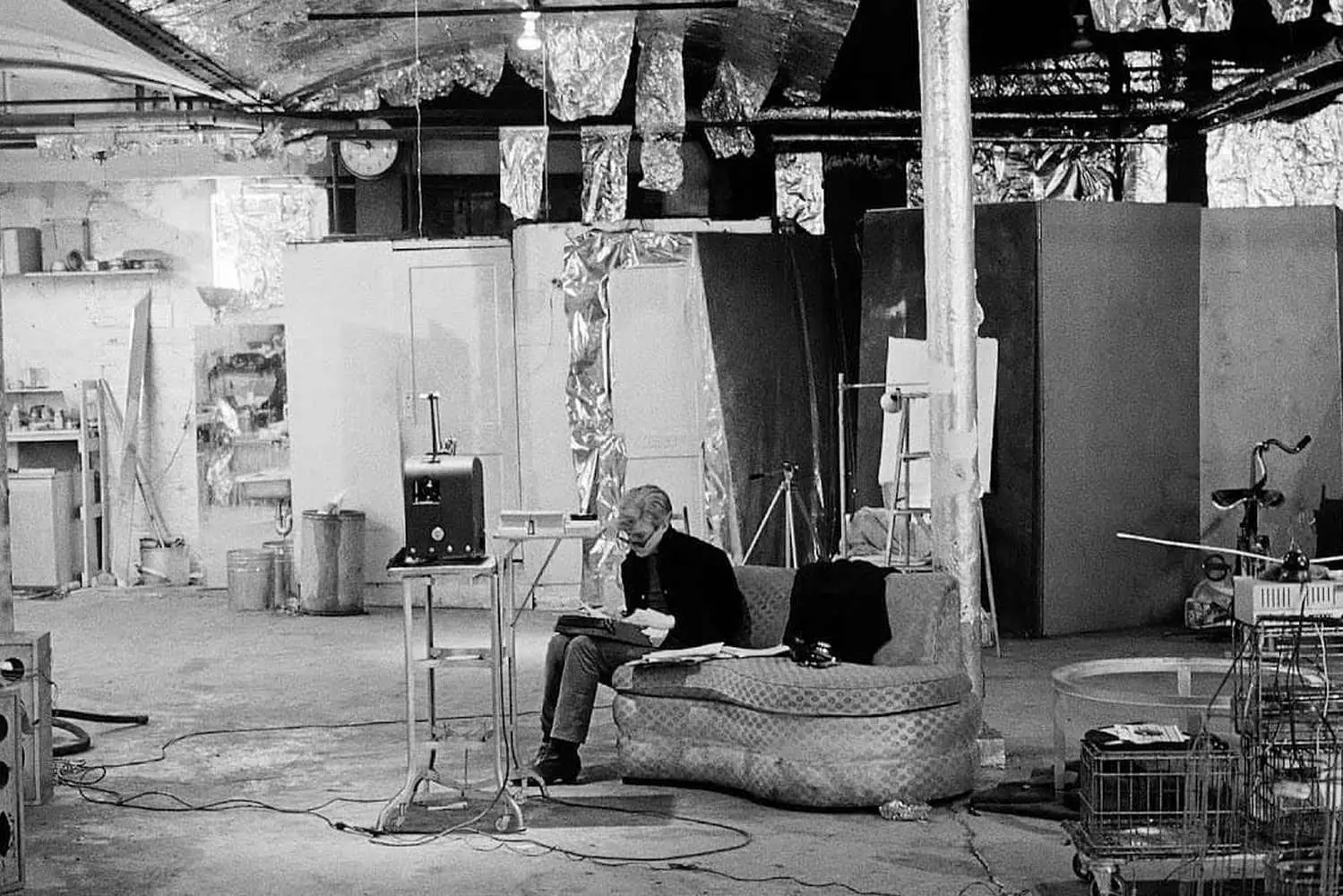
Marilyn, Mao, and Other Icons
Andy Warhol did more than just depict celebrities — he deconstructed them into pictograms, reassembled them, and presented them to the world as cultural products. In his hands, Marilyn Monroe transformed from a tragic actress into a bright, acid-pink symbol of Hollywood’s glossy dream, where every glance became a mass-produced cliché and every frame — no longer an emotion, but a commodity.
Warhol didn’t create portraits as a traditional artist, but as a brand designer — fully aware that repetition kills authenticity, yet gives birth to myth. He printed the same face dozens of times, changing only the colors, as if to show: all it takes for an iconic image is a recognizable outline and the viewer’s emotional projection. Monroe in green tones? That’s no longer her — it’s our fantasy of her. Elvis with a revolver? A hyperbolized cowboy-singer built from pop clichés. Mao on a fuchsia background? A symbol of political power, ripped from context and placed into the glossy world of magazine covers.
Each series is a visual experiment in perception. The colors are deliberately unnatural, the repetitive duplicates blur focus and strip the portraits of individuality. In place of a person — an image; in place of a biography — a repeating pattern. Warhol used the aesthetics of mass printing and silkscreening to emphasize the manufactured and serialized nature of modern culture. A star is not a person, but a reproducible cover, endlessly spinning on the conveyor belt of attention.
In this way, his works are not only art but also a meta-commentary on how celebrities become icons — and how icons become empty shells. Warhol didn’t romanticize his subjects; he exposed the cult of personality, turning it into a vibrant, ironic spectacle of paint and repetition.
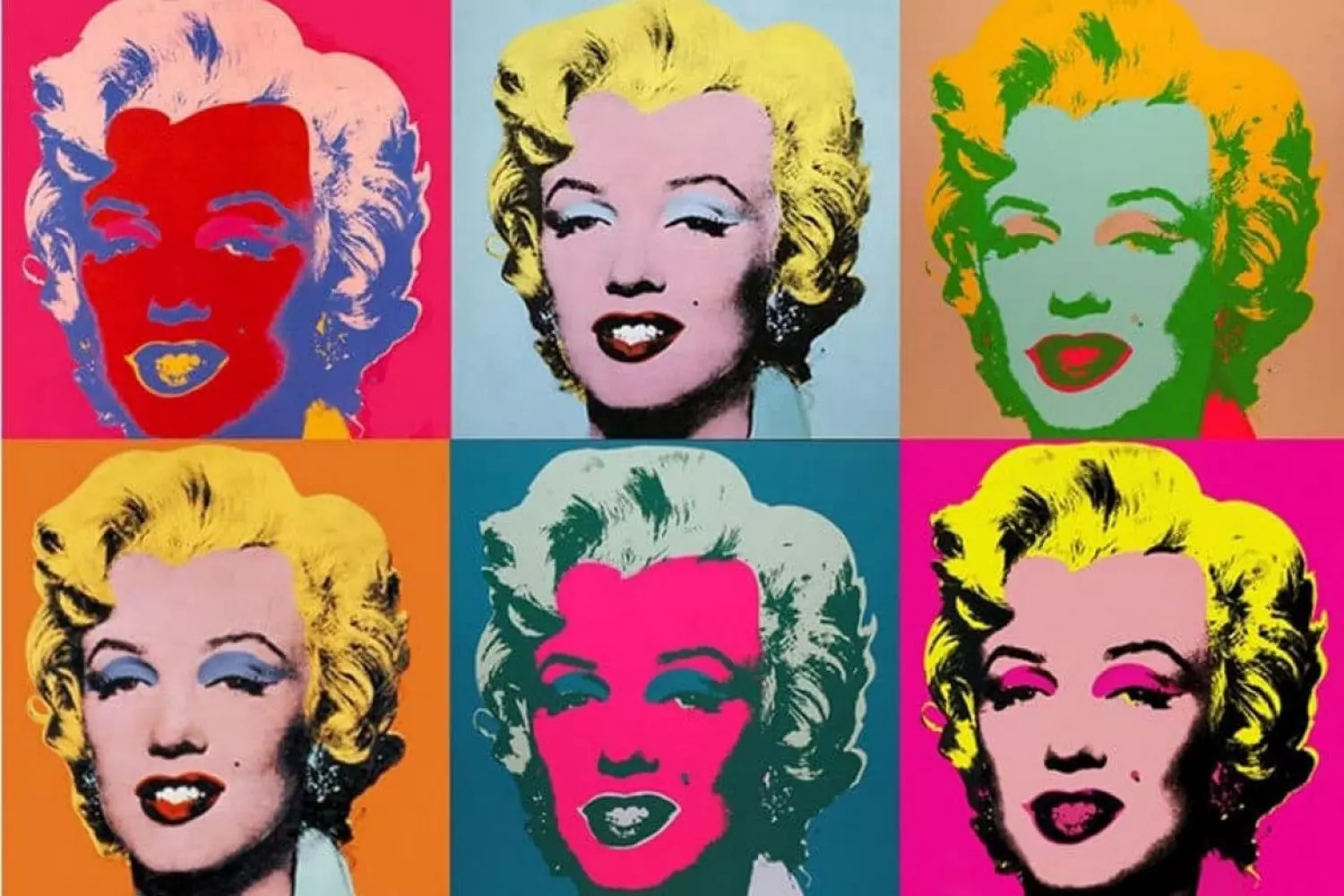
Experiments with Film and Media
Few people know that Andy Warhol was not just a master of painting, but also one of the pioneers of avant-garde cinema and media experimentation. Over the course of his life, he directed more than sixty films, many of which broke conventional rules and challenged the very definition of cinema. His works could hardly be called traditional — they were more like meditative visual installations, designed for contemplation and reflection.
- 01. Warhol’s most famous film is “Sleep” (1963) — an unusual and, at first glance, provocative experiment, in which the camera continuously captures a man peacefully sleeping for five and a half hours. This project radically expanded the viewer’s perception, forcing them to pause, let go of conventional storytelling, and surrender to the simple act of observation. Through such minimalism, Warhol showed that cinema is not only about drama and action, but also about reality itself, recorded in time.
- 02. In addition, Warhol was one of the first artists to consciously use television as a new form of art. In 1969, he launched his own TV show, “Andy Warhol’s TV”, where he broadcasted everyday, sometimes boring or absurd, moments of life. The show was a living experiment with the medium — Warhol played with audience expectations, blurred the lines between public and private, between art and entertainment.
For Warhol, any medium — whether a canvas, film reel, or commercial — became a tool for creative expression and social exploration. He didn’t limit himself to traditional painting but instead wove new technologies and mass communication into his work, fully aware that modern perception is shaped through these channels. In this way, Warhol didn’t just create images — he created the very idea of contemporary art, where not only form matters, but also the mode of delivery, the context, and the mechanisms of mass influence.
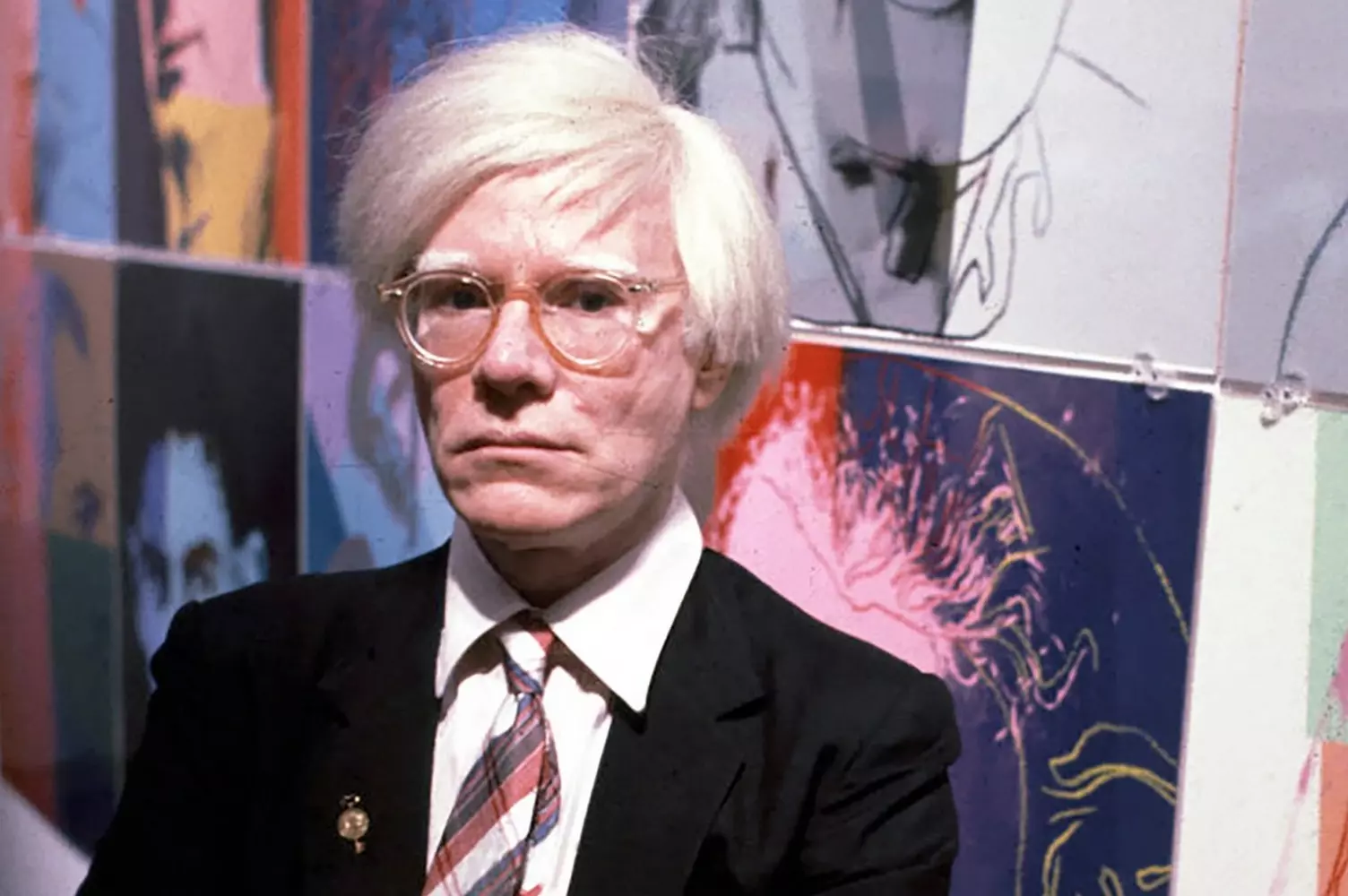
Money, Brands, and Commerce
Andy Warhol never shied away from his fascination with money and commerce — on the contrary, he openly admitted to loving money and saw it as an essential part of both life and art. For him, wealth and fame weren’t shameful byproducts of success but natural elements of what it meant to be a modern artist. This mindset permeated everything he did, from his choice of subjects to his techniques.
Warhol made frequent use of money as a visual symbol in his work. One of his most iconic motifs was the image of the dollar bill — he transformed it into art, emphasizing the dual nature of money as both a tangible force and a collective dream. He also embraced mass culture’s visual language: logos, brands, and advertisements. He painted famous Coca-Cola bottles, Campbell’s soup cans, and designed bold, unforgettable album covers. One of his most notable projects was the iconic banana cover for The Velvet Underground, a band deeply intertwined with New York’s underground scene, where Warhol acted as both producer and art director.
Through this approach, Warhol became a kind of prophet of contemporary art — a world where the lines between commerce and creativity blur. His works reveal how money and branding cease to be purely economic concepts and evolve into cultural symbols that shape perception and artistic value.
Fun Fact: One of his works — "Silver Car Crash (Double Disaster)" — sold for $105 million in 2013.
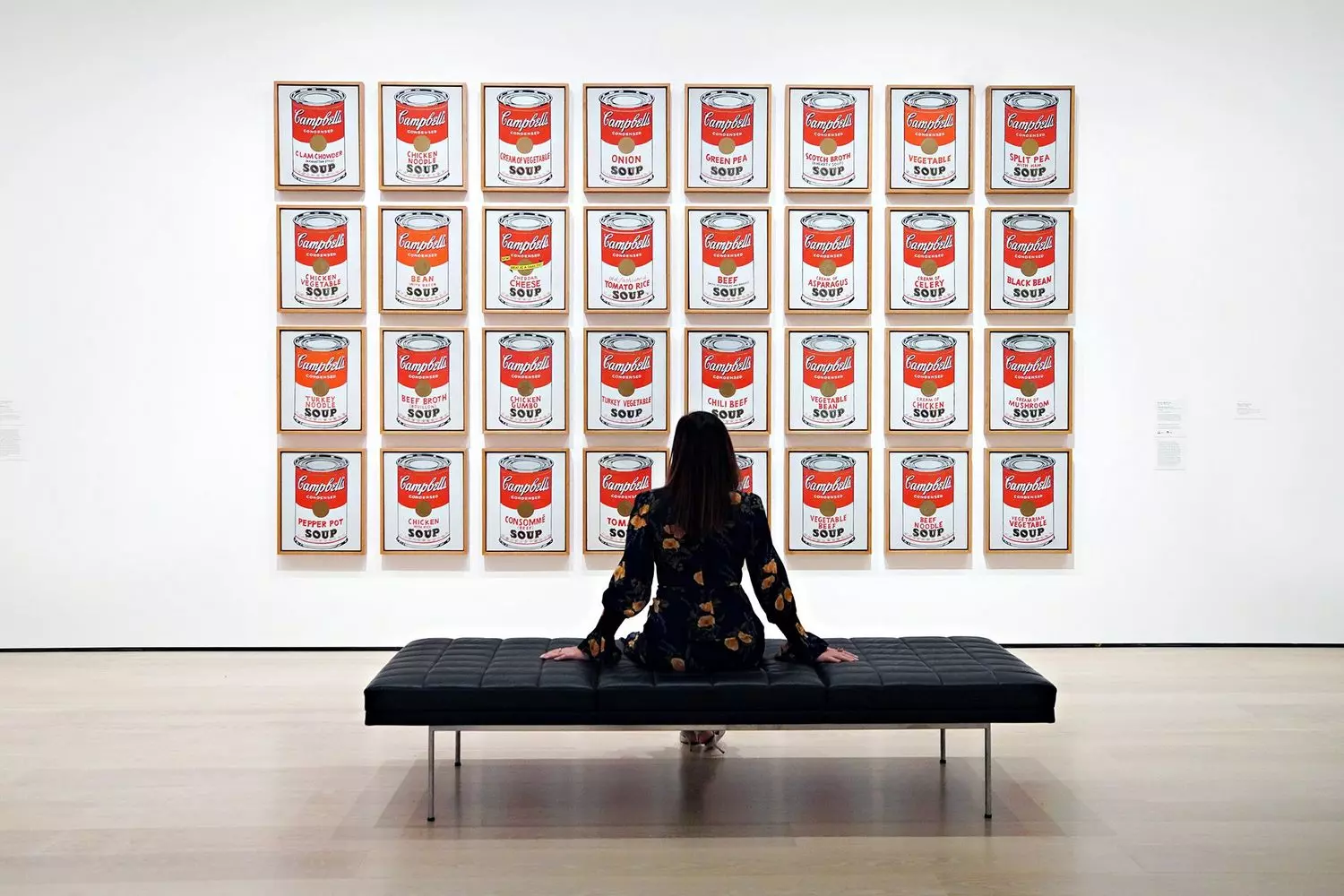
Warhol and Celebrities: The Cult of the Face
Andy Warhol had a profound fascination with celebrities and their lifestyles — not merely a casual interest, but a deep passion that was tightly interwoven with his artistic vision. For Warhol, celebrities weren’t just people — they were symbols of the era, embodiments of modern culture, media saturation, and collective attention. He saw something far greater in their faces than just features — for Warhol, a face was like a screen, reflecting society’s desires, fears, and myths.
- The artist himself once said that the face is a “surface,” and it was precisely this surface he explored, transforming it into a unique artistic object.
- Through repetition, bold color overlays, and slight distortions, Warhol turned ordinary portraits into something entirely new — he turned the face into a sign, a symbol that was instantly recognizable and perceived as iconic. The repetition in his technique didn’t bore — on the contrary, it compelled the viewer to reflect on how media and mass production shape and reshape the public image of celebrities.
- He had a rare talent for “iconizing” virtually anyone — not just global stars like Liza Minnelli, David Bowie, or Michael Jackson, but also lesser-known actors, socialites, and sometimes even random passersby. The only requirement, in Warhol’s view, was that the face be expressive, intriguing, and a little glossy — as if ready for the cover of a magazine. Thanks to his unique perspective and artistic vision, Warhol turned every portrait into a true symbol that didn’t just depict a person’s appearance but told the story of the time in which they lived.
In this sense, Warhol created his own “cult of the face” — where every wrinkle, every shadow, and every shade of skin became part of a visual narrative, portraying the celebrity as a phenomenon rather than just a person. His portraits helped society understand how we perceive and elevate individuals into icons — revealing the illusions, media tricks, and, at the same time, the very real magic of art behind it all.
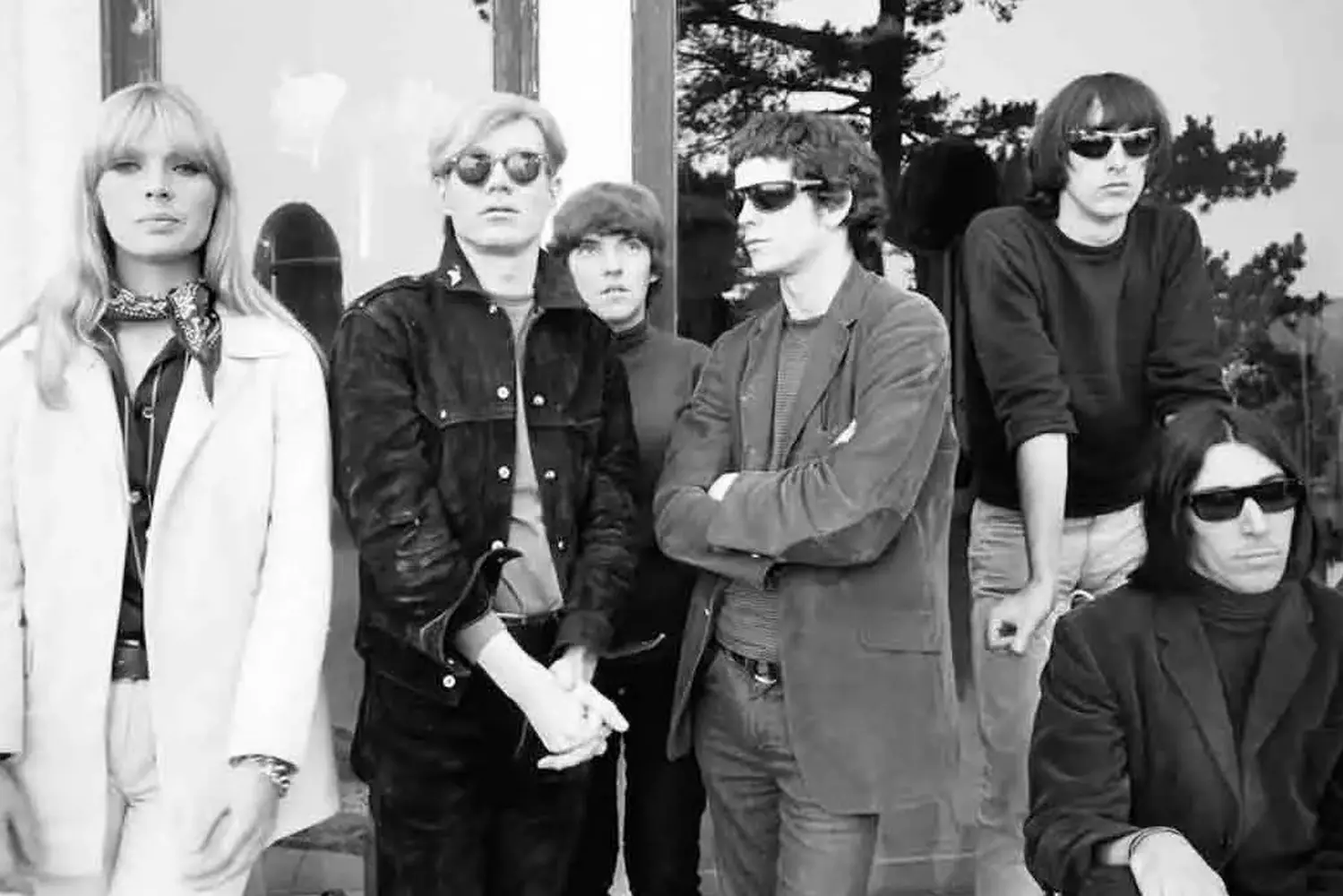
Andy Warhol’s Personal Life and Character: Behind the Facade of Pop Art
Andy Warhol remains a figure shrouded in myth and mystery — and his personal life was just as intriguing as his art. While the public often perceived him as an eccentric, enigmatic genius of pop art, behind that persona was a complex and multifaceted individual.
- By nature, Warhol was extremely reserved and cautious. He avoided excessive displays of emotion and rarely opened up, even to those closest to him. His communication style was somewhat detached and delicate — he preferred listening over speaking and often appeared aloof or indifferent. Yet those who knew him well spoke of his sharp sense of humor, quiet kindness, and emotional vulnerability hidden beneath his external eccentricity.
- In his private life, Warhol shunned dramatic romances. He valued discretion and restraint. While he was closely connected with friends and collaborators in the art world, he avoided forming overly intense emotional bonds. Many biographers believe his relationships were based on mutual respect and creative exchange, but he kept a firm boundary around his personal space, carefully managing his connections to preserve his autonomy.
- Interestingly, in his later years, Warhol began to speak more openly about his sexual orientation and identity, becoming one of the earliest openly queer figures in the art world. This honesty increasingly shaped his work — themes of the body, desire, and identity became key elements in his visual language.
In essence, Andy Warhol was a man of contradictions: both public and private, emotionally cool yet deeply sensitive, commercial and intensely personal. His personality mirrored the era he lived in — a time of cultural shifts, where mass media collided with personal identity. Understanding Warhol’s character offers valuable insight not just into his art, but also into how modern cultural mythology is born.
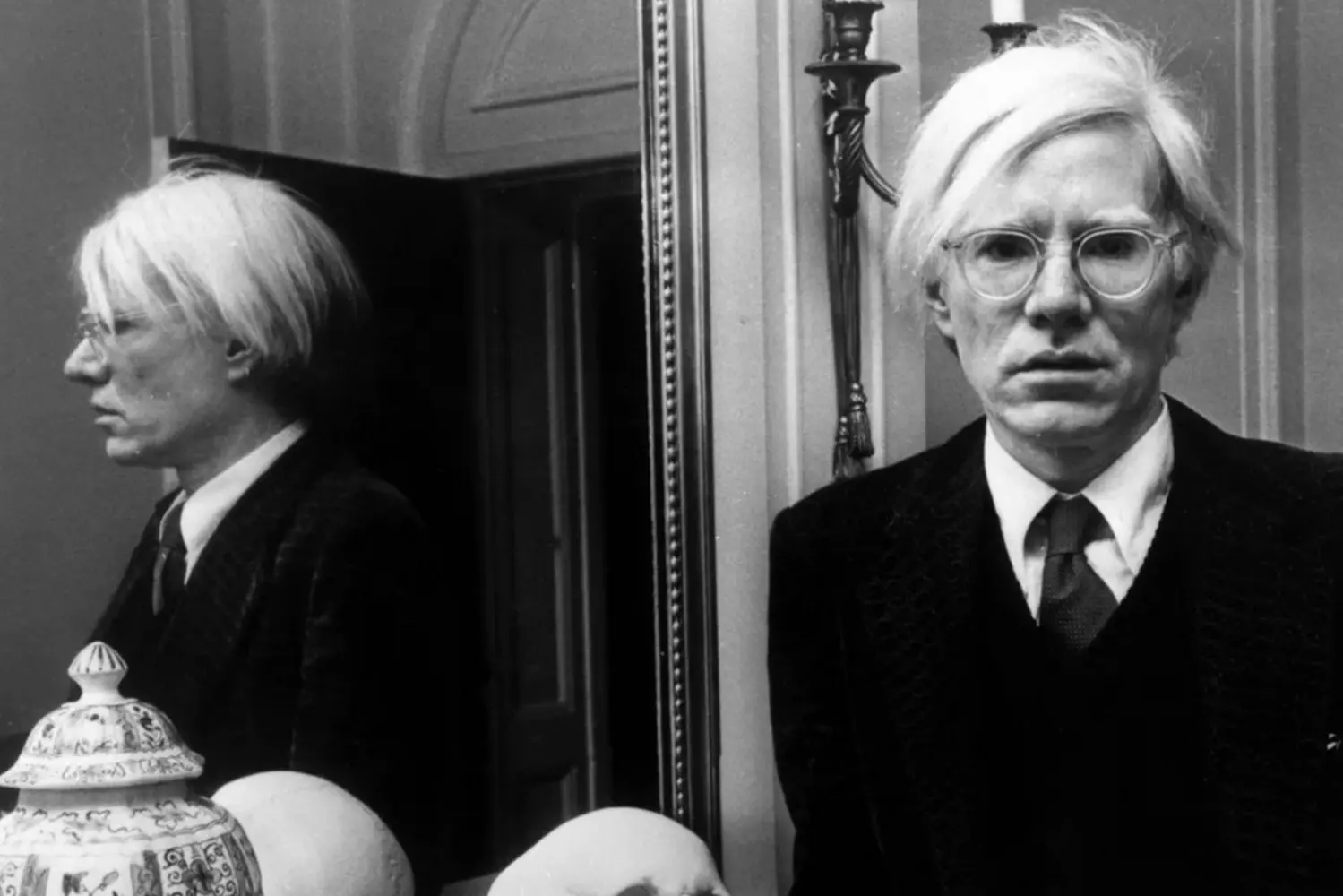
The Final Years and Death of Andy Warhol: A Shadow Over the Gloss
The final years of Andy Warhol’s life were filled with intense work, new projects, and at the same time, inner struggles that few could notice behind his usual facade of a cold observer and commercial genius.
In the 1980s, Warhol continued to work actively, pushing the boundaries of his creativity. He returned to painting, creating vivid series of celebrity portraits, collaborating with fashion houses and pop culture stars. His “Factory” became more than just a studio — it turned into a true cultural phenomenon attracting artists, musicians, and actors. During this period, he immersed himself even deeper into the world of glamour and media, becoming a symbol of the era of mass culture icons.
The Attempt on Andy Warhol’s Life: A Moment That Changed Everything
On June 3, 1968, a turning point came in Andy Warhol’s life. On that day, shots rang out in his famous studio, the “Factory,” which could have ended the career and life of one of the most influential artists of the 20th century. The attacker was Valerie Solanas, a writer, radical feminist, and author of the SCUM Manifesto, in which she called for the destruction of men as a class.
- The reasons behind the attack were both personal and ideological. Solanas believed that Warhol deliberately ignored her work and stole her ideas. She had previously written a script and handed it to Warhol, hoping for a collaboration, but he put it aside — possibly even lost it. This became the trigger for her paranoia. That June day, she came to the “Factory” armed with a gun and fired three shots at Warhol, then shot the studio’s curator, Mario Amaya. One of the bullets pierced the artist’s abdomen, causing severe injuries: organs and his spine were damaged, and Warhol clinically died on the operating table, but doctors saved his life.
- This episode left a deep mark. After the attempt on his life, Andy Warhol became a different person. Physically, he was never the same — he needed corsets and constant treatments and lived with pain. But his psychology changed even more. From an eccentric and outgoing artist who loved parties and people, he became cautious, withdrawn, deeply absorbed in work, and often avoided publicity.
- Many researchers believe the shooting marked a boundary between two Warhols: before and after. Before — an avant-garde, wild, fearless experimenter. After — more alienated, commercial, inclined toward control and safety.
- Interestingly, Solanas herself expressed no remorse after her arrest. On the contrary, she claimed that “Warhol had too much power over her life.” She was declared partially insane and confined to a psychiatric clinic.
- The motives for the attack were both personal and ideological. Valerie Solanas believed Warhol exploited her: she gave him the script of her play, but in her view, he neglected her authorship and ignored her creative contribution. Rejection, neglect, resentment — all of this turned into growing paranoia and anger. Ultimately, she came to the “Factory” armed with a gun and shot the artist.
- The bullets hit Warhol’s abdomen and chest. He survived miraculously: doctors performed a complex surgery, removed his spleen, and stitched multiple damaged organs. From that moment, he remained fragile and vulnerable, dependent on a corset, constant medical supervision, and pain.
- Interestingly, Solanas did not flee and surrendered to the police herself. She received a minimal sentence — three years of imprisonment, most of which she spent in a psychiatric hospital.
For Warhol, this assassination attempt became a kind of rebirth. He survived but was changed. This experience is one of the rare cases when reality literally bursts into the world of pop art with its polished surface, forcing the artist to confront his own mortality.
By the late 1980s, Andy felt the pressure of time. He understood that the era he helped create was changing. New movements in art and culture began to push pop art off its pedestal. Nevertheless, Warhol remained in demand and influential, continuing to exhibit his works and participate in projects around the world.
In February 1987, Warhol underwent surgery to remove his gallbladder. Complications after the procedure led to a pulmonary embolism, and on February 22, he passed away at the age of 58. His death shocked the art world: despite his outward coldness, Warhol was a living symbol of his era, and his departure was felt as the loss of a unique voice.
The funeral was modest, but his legacy proved immense. After Warhol’s death, the art world more deeply realized the scale of his influence — not only as an artist but as a cultural phenomenon who redefined the boundaries of art, media, and celebrity. His works continue to inspire and provoke, and his name remains a symbol of the era in which he lived and created.
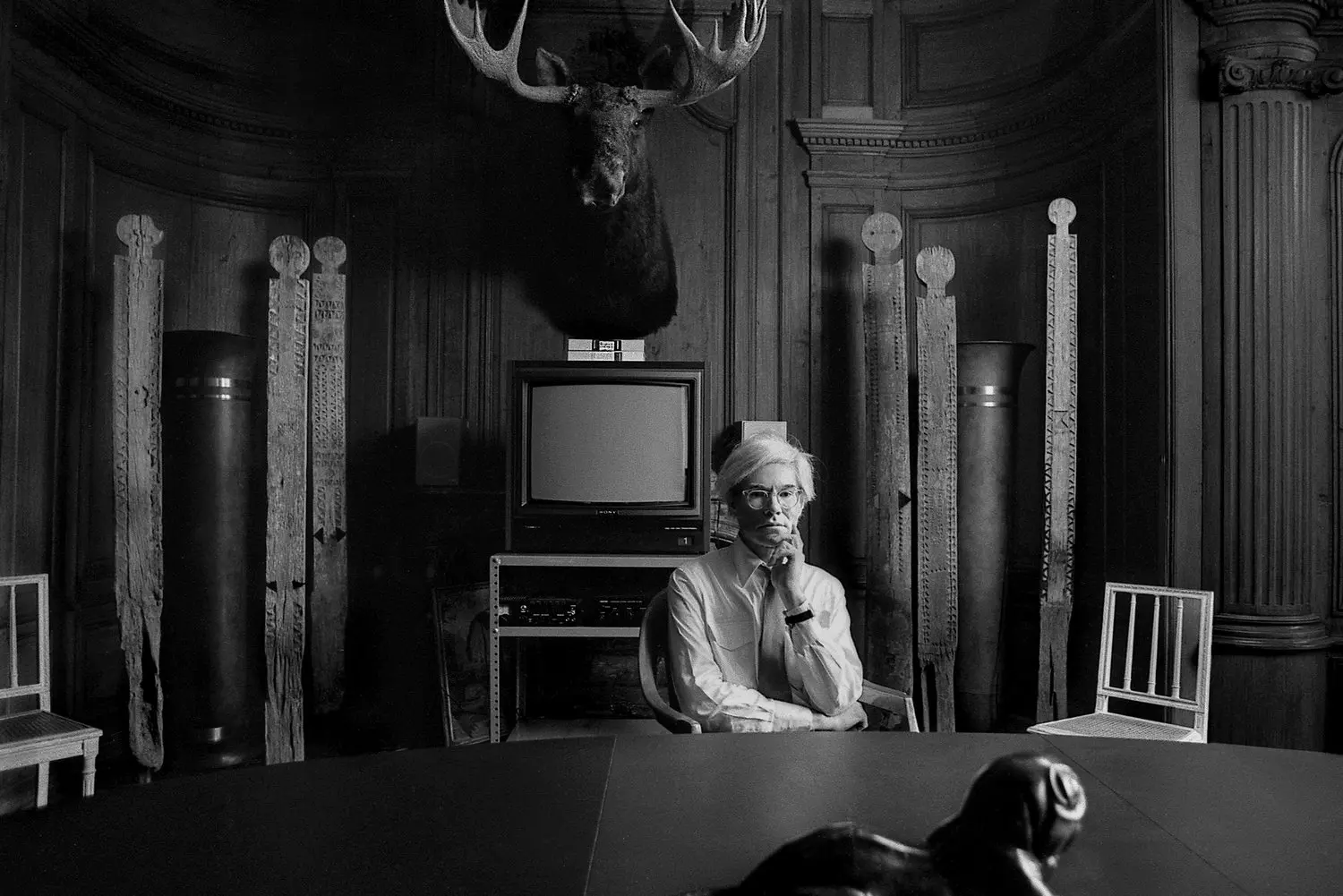
His Diaries: An Inside Look
After Andy Warhol’s death, his diaries came to light — a unique document that opened a window into his inner world and revealed how the great artist perceived and recorded his reality. These entries differ from conventional autobiographies or philosophical reflections — they represent something entirely different, almost a documentary report of each day.
- 01. Warhol’s diaries are not a stream of consciousness, but precise, sometimes meticulous records of events, meetings, phone calls, purchases, and expenses. He kept detailed accounts of everything that happened to him and around him. These lines contain lists of people he interacted with, addresses, names of establishments, dates, and even amounts of money spent on food or taxi rides. Such close attention to detail resembles laboratory work: Warhol seemingly turned his life into an experiment where every little thing mattered.
- 02. For him, it was not just a way to remember events — it was an art of capturing time, a kind of performance in written form. Every entry is a part of his life frozen in a precise moment he didn’t want to miss. This documentality reflected his view of the world, where media, mass culture, and reality blended, creating endless layers of images and meanings.
- 03. Interestingly, Warhol did not try to embellish or romanticize his entries. On the contrary, the diaries convey a mechanical, almost emotionless recording of time. They lack vivid emotional outbursts and rather provide a dry report of how the day went, what was eaten, who was spoken to. This makes the diaries incredibly honest and even intriguing — because behind such apparent simplicity hides the complex inner world of a man who became an icon of contemporary art.
- 04. The publication of these diaries after the artist’s death allowed people to see Warhol not only as a genius and media star but also as a person who tried to organize and make sense of his life through writing. For fans and scholars of his work, these diaries became an important key to understanding how he thought and felt, how he perceived himself and the surrounding world.
Thus, Andy Warhol’s diaries are not just an archive of events but a separate work of art that captures and contemplates the nature of time, identity, and contemporary existence.
History and Development of American Cinema
Legacy: Influence, Museums, Market
Andy Warhol passed away in 1987, but his cultural and artistic legacy continues to grow and exert a profound influence on the modern world. He was not just an iconic figure of his time — he anticipated the changes that today define not only art but also the entire media environment, mass culture, and even the attention economy.
One of Warhol’s main monuments is the museum in Pittsburgh — his hometown. The Andy Warhol Museum is the largest institution in the world dedicated to a single artist. It houses the most comprehensive collection of his works and materials that reveal different facets of his talent — from painting and graphics to filmmaking and photography. The museum serves not only as a repository of his legacy but also as a place where research and discussions about the significance of pop art and consumer culture continue.
Warhol’s influence is felt across many spheres of contemporary life. In fashion, his ideas have transformed into bold prints and recognizable images found on clothing and accessories. In music — in the personas of artists, performances, and visual shows where commerce and art intermingle. In advertising and design — in how brands and products are created to become cultural symbols rather than just commodities.
Contemporary artists like Jeff Koons and Damien Hirst acknowledge Warhol’s impact on their work. They continue to play with ideas of mass production, consumption, and turning everyday objects into art pieces, which was a fundamental concept for Andy.
Why does Warhol remain important today? The answer lies in the fact that he seemed to look into the future and saw the world we live in now:
- Where anyone can become famous
Social networks and platforms like Instagram and TikTok have made popularity accessible to everyone — the idea of celebrity as a mass product, embodied by Warhol in his portraits, has become the norm. - Where advertising and art have become indistinguishable
The boundaries between commerce and creativity have blurred so much that visual images and brands become part of the artistic discourse. - Where art itself is a brand
Warhol understood that the artist himself can become a product, and his works — symbols that can be scaled and spread worldwide.
Andy Warhol in Contemporary Film, Music, and Culture
Andy Warhol is a figure whose image and ideas continue to live on and inspire creators across diverse artistic fields today. His influence can be traced not only in visual art but also in cinema, music, fashion, and even digital culture.
In modern cinema, Warhol often appears as the subject of biographical films and documentaries that reveal his unusual personality, creative genius, and contradictory character. For example, films like "Factory Girl" or "Andy’s Worship" give viewers a chance to peek behind the scenes of the legendary New York art scene of the 60s and 70s, showing how iconic images were created and the social processes behind them. His cult of personality and artistic experiments become not just history but a symbol of an era of change and rebellion against traditions.
Today, his aesthetic and approach to blending pop culture and art inspire musicians such as David Bowie, Lana Del Rey, and rappers who use pop art-style visuals to enhance their stage image. Warhol’s images with their bright colors, repetitions, and graphic portraits often appear in music videos and concert shows, giving them special charisma and historical context.
Beyond film and music, Warhol lives on in fashion and digital art. His style — bright colors, repeating motifs, logos — is actively used by designers and brands, and his concept of merging art and commerce has become a foundation for modern marketing and visual storytelling on social media.
Thus, Andy Warhol remains not only a historical figure but also a living symbol of contemporary culture, continuing to inspire and set the tone for new generations of artists and creators around the world.
His approach to mass-producing aesthetics and images seems even more relevant today than in the 1960s when he started this revolution. In the era of digital consumption, visual noise, and endless content, Warhol’s ideas are not just alive — they form the basis of how we perceive and create culture.
Therefore, Andy Warhol’s legacy is not merely a collection of paintings or exhibitions but a living system of views and methods that continue to influence art, media, and society as a whole. His name remains synonymous with pop culture and a revolution in the understanding of what modern art is.
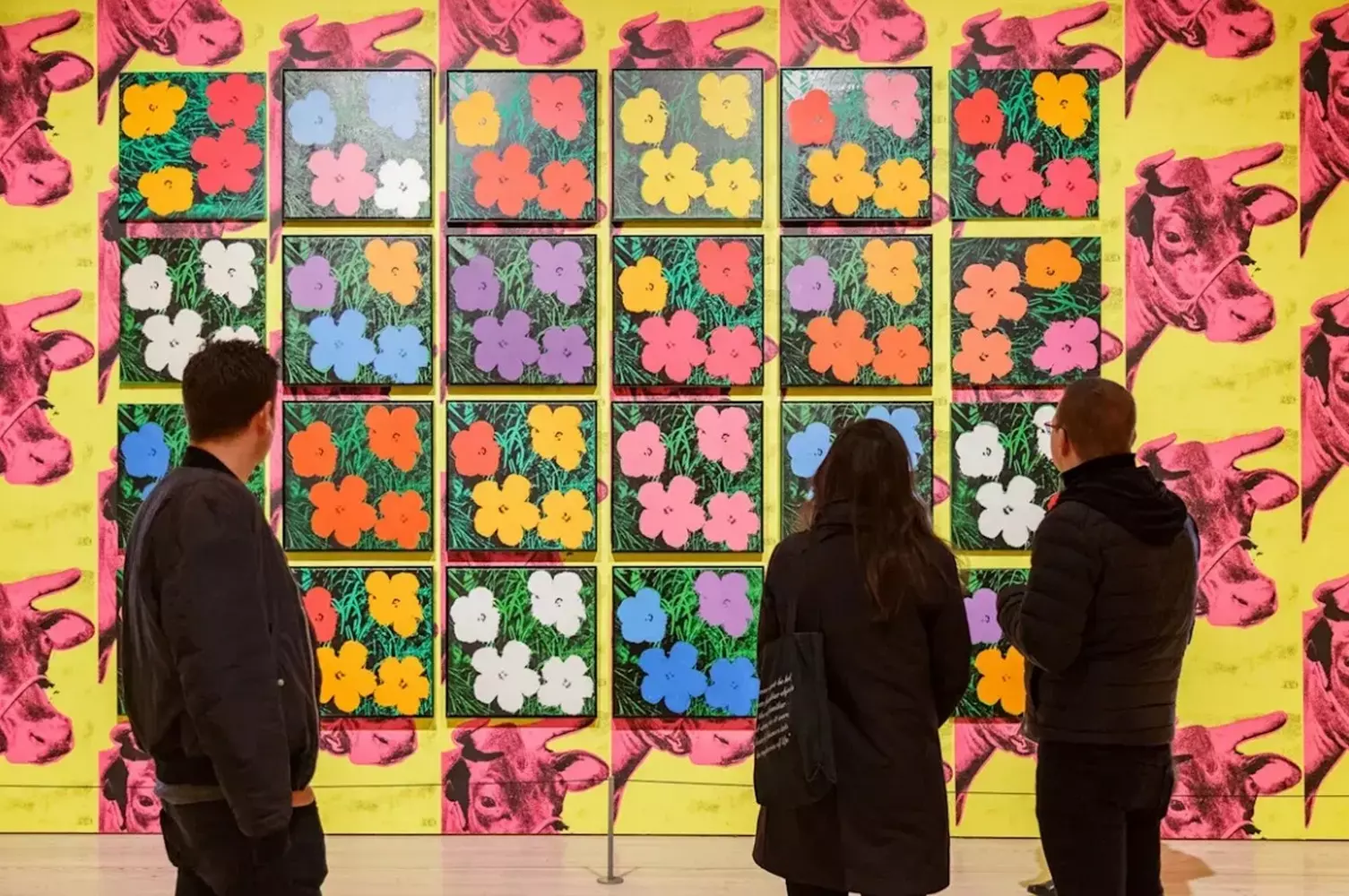
Secrets of the Silver Provocateur: A Few Facts About Andy Warhol That Will Change the Way You See the Pop Art Genius
Andy Warhol was not just an artist who transformed 20th-century art. He was an enigmatic figure who turned his own life into an art project. Behind the famous soup cans, portraits of Marilyn, and silver wigs lies a true tangle of oddities, brilliant insights, and outright madness.
He collected trash, slept on money, feared touch, and dreamed of opening a restaurant for lonely people. His studio was covered in foil, and his films lasted eight hours without a single scene change. He predicted the era of social media, brand obsession, and the cult of instant fame — back in the 60s.
Ready to find out what Warhol was really like? Here are some shocking facts proving that behind the mask of a cold observer was the most extraordinary artist of modern times.
- 01. His first job — shoe illustrator
Before pop art, Warhol earned money by drawing ads for shoe brands. His unusual technique — painting with his feet dipped in ink — caught the attention of Glamour magazine and opened the door for him into the fashion world. - 02. The “Campbell’s Soup Cans” weren’t his idea
The legendary series of soup paintings was suggested to him by the gallery owner Muriel Latow, who said, "Paint something you see every day." Warhol ate that soup for lunch for 20 years straight, admiring its “democratic” nature. - 03. He had 25 cats, and they were all named Sam
The artist adored Siamese cats, and called them all, except one (named Khrushchev), Sam. In 1954, he even published the book “25 Cats Name Sam and One Blue Pussy”. - 04. The “Factory” was covered in silver foil
His studio, known as the “Silver Factory,” was covered in foil and painted with spray paint — even the artist’s cat once turned “silver.” Here they created art, filmed movies, and threw wild parties featuring The Velvet Underground and Salvador Dalí. - 05. He made an 8-hour film about the Empire State Building
Warhol was a prolific filmmaker: his film “Empire” (1964) is eight hours of static footage of the skyscraper in slow motion. At the premiere of “Sleep” (5.5 hours of a person sleeping), only seven out of nine viewers stayed until the end. - 06. He collected… receipts and trash
Warhol kept everything: tickets, wrappers, old newspapers, dentures, and even his own urine (which he used in his “oxidation paintings”). After his death, 612 “time capsules” — boxes full of artifacts from his life — were found. - 07. He dreamed of opening a restaurant for lonely people
Hating to eat in company, Warhol planned a chain called Andy-Mats, where guests would sit in separate booths. He often ordered food for two, giving the second portion to homeless people. - 08. His last words: “I want to attend my own funeral”
Before his death in 1987, Warhol joked that he wanted to “attend his own funeral.” In his coffin, they placed an issue of Interview magazine and a bottle of Estée Lauder perfume — his favorite scent. - 09. He wore wigs because… his mother asked him to
In his youth, Warhol started losing his hair, and his mother, Julia, insisted he wear a wig. Later he turned this into part of his image — he had a whole collection of silver wigs that he changed like actors change costumes. - 10. He slept surrounded by money (but didn’t spend it)
Warhol loved cash, but not as a means of payment — as an art object. He stored stacks of dollars in cereal boxes and sometimes slept on them, believing that “money smells better than perfume.” - 11. He secretly recorded ALL conversations
The artist always carried a tape recorder and recorded every conversation, even with waiters. Later, he made collages for his books from these recordings. Once he recorded Bob Dylan saying to him: “You’re not a person, you’re a tape recorder.” - 12. He collected… canned goods (but didn’t eat them)
Besides Campbell’s soup cans, Warhol bought exotic canned goods from around the world — from kangaroo meat to jellyfish. They stood on his shelves as works of art. - 13. He believed TV was the new God
Warhol loved TV and could watch it for days, even without sound. He believed “TV gave people more than the Bible” and dreamed of creating his own channel that would only show his films. - 14. He hated physical contact (even handshakes)
Warhol had a panic fear of germs and never touched anyone. Instead of handshakes, he nodded or waved. If someone did touch him, he immediately sanitized his hands. - 15. He created a “musical group” from vacuum cleaners
In 1965, Warhol presented the installation “Silver Clouds” — inflatable pillows floating in the air. Later, he added vacuum cleaners that “played” a humming noise. Critics called it a “symphony of industrial madness.” - 16. He bequeathed to be buried with McDonald’s
In his will, Warhol requested that “Big Macs” be distributed at his funeral. The executors of his will limited this to a bottle of Coca-Cola in his coffin — he considered it “the most democratic art.”
Warhol turned his life into art, and art into provocation. He collected not only things but moments, creating from them an eternal pop culture. His legacy is not just paintings but an idea: “In the future, everyone will be famous for 15 minutes.” And he was right.
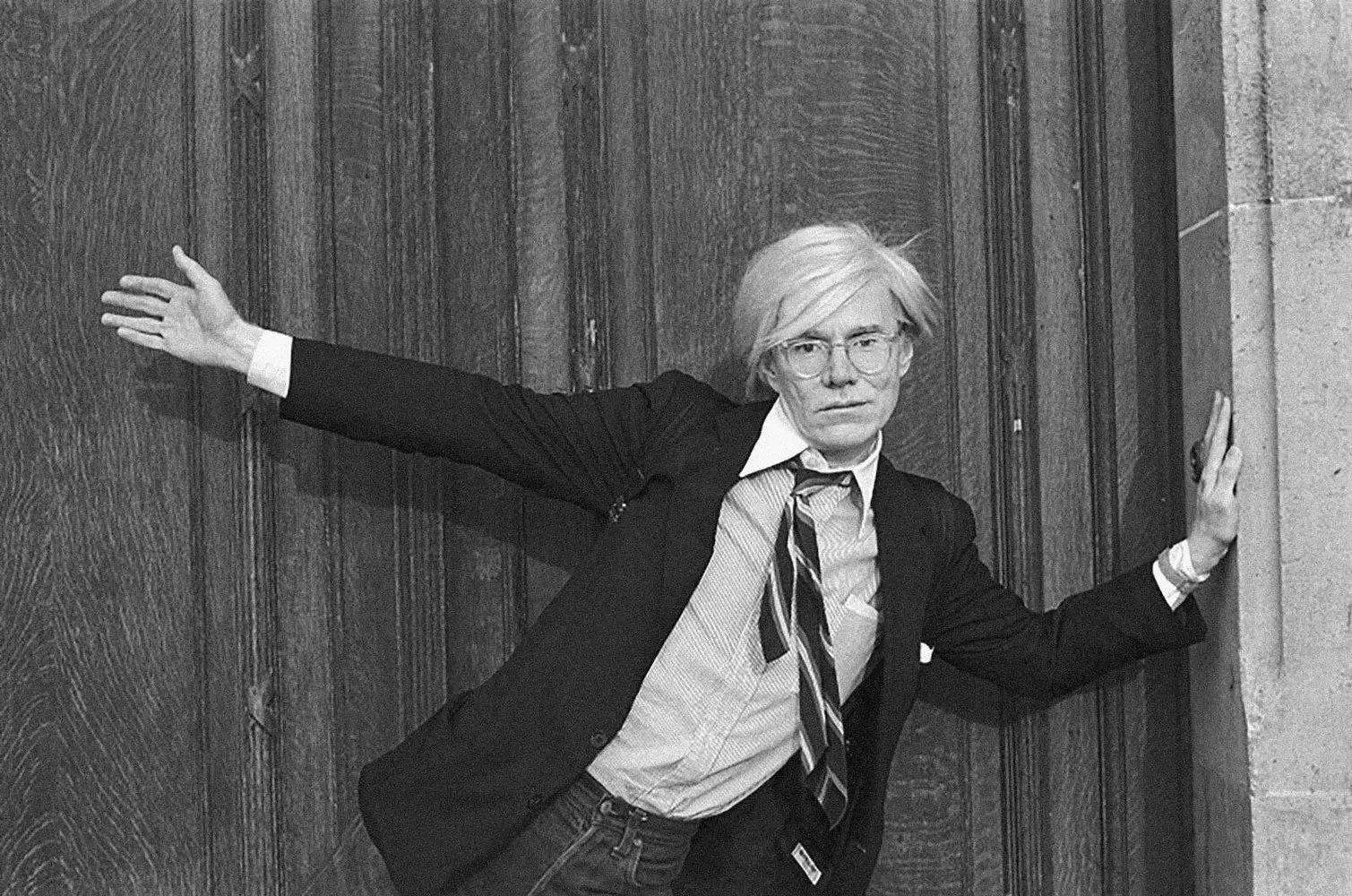
See pop art with your own eyes with American Butler
Andy Warhol proved that art can be simple, repetitive, even boring — and still be brilliant. He inspired people to be themselves, even if that means being strange. His path was one of authenticity, glamour, and provocation.
Want to experience the true art of Andy Warhol? American Butler offers private tours of contemporary art museums in New York, Pittsburgh, and Los Angeles, where you can see original works and immerse yourself in the atmosphere of the era.




































